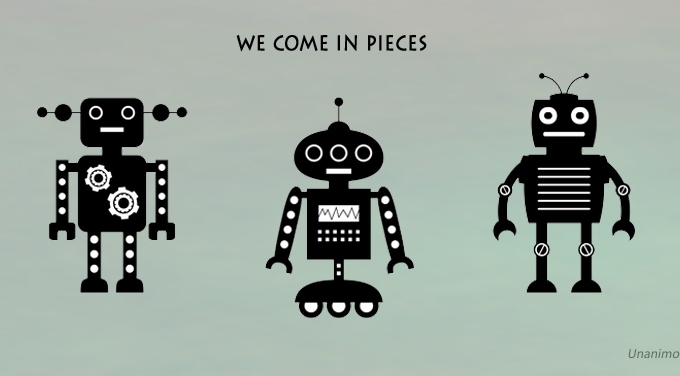
As we dive into 2015, it’s worth reflecting on the groundswell of fear that erupted over the last 12 months related to A.I. and its potential to undermine humanity. The frenzy was kicked off when Physicist Stephen Hawking declared Artificial Intelligence a grave danger to the human race, warning we could easily lose control over any intellect that surpasses our own. In an op-ed coauthored with Nobel laureate Frank Wilczek, MIT physicist Max Tegmark, and computer scientist Stuart Russell, Hawking warned, “the short-term impact of AI depends on who controls it, the long-term impact depends on whether it can be controlled at all.”
The fears span a wide range of human endeavors, including the possibilities that A.I. systems emerge that can manipulate financial markets, out-invent human engineers, out-think human scientists, out-strategize human leaders, and create weapons that are simply beyond our understanding. Bolstering these warnings, Nick Bostrom of Oxford’s Future of Humanity Institute recently called A.I. the single greatest threat to human existence, declaring that an artificial super-intelligence is likely to make us humans obsolete and expendable. In fact, he described this threat as “the most important and most daunting challenge humanity has ever faced,” arguing that any thinking-machine that exceeds our own abilities will ultimately have no reason to support humanity and no need to align its interests with our own. Even Elon Musk has jumped into the fearful fray, recently calling the super-intelligence danger “increasingly probable” and said that its likely humanity’s “biggest existential risk.”
So, can we protect ourselves from the emerging dangers of AI? Unfortunately, we can’t put the genie back in the bottle. Research into AI is accelerating every year, with  Google, Facebook, Microsoft, and Twitter all developing new labs and acquiring new AI companies. Just last year, Google purchased DeepMind, a two year old AI company for $650 million. Dropbox acquired Anchovi Labs. Yahoo purchased IQ Engine and SkyPhrase. Facebook hired a slew of AI researchers, launching major initiatives. So how do we avoid the looming demise that respected thinkers like Hawking, Wilczek, Tegmark, Russell, Musk, and Bostrom fear?
Google, Facebook, Microsoft, and Twitter all developing new labs and acquiring new AI companies. Just last year, Google purchased DeepMind, a two year old AI company for $650 million. Dropbox acquired Anchovi Labs. Yahoo purchased IQ Engine and SkyPhrase. Facebook hired a slew of AI researchers, launching major initiatives. So how do we avoid the looming demise that respected thinkers like Hawking, Wilczek, Tegmark, Russell, Musk, and Bostrom fear?
One promising approach is the UNU platform for “Human Swarming”. The method enables artificial intellects to be crafted from human building-blocks instead of purely digital ones. Using a novel process called Artificial Swarm Intelligence, the system collects real-time input from groups of networked users, combining their creativity and wisdom into an emergent A.I. that can answer questions, make decisions, or take actions. The technology works by creating dynamic feedback loops around user-groups, enabling a real-time negotiation among many minds at once, everyone pushing and pulling on the boundaries of the decision-space until they converge on insights and conclusions that reveal the collective wisdom of the participants.
In many ways, the process is similar to natural swarms and flocks, which reflect the wisdom of its members in real-time, the intelligence of the whole possessing capabilities that exceed those of its parts. But unlike natural swarms, the glue that holds participants together in a Collaborative AI are the feedback loops and swarming algorithms that act as computational mediators, enabling groups of all sizes to collaborate in synchrony as a unified dynamic system, pushing and pulling on each other as they converge on solutions. Simply put, this process of real-time social swarming empowers groups of users to pool their wisdom and think as one, forging a powerful new form of A.I.
There are many benefits of a Collaborative AI as compared to a purely digital one. First, because Collaborative A.I. incorporates living breathing people in the loop, it instills human emotions and sensibilities into the emergent intellect. This makes the approach far less likely to produce a super-intelligence that will harbor objectives that conflict with our own. Second, the architecture ensures that people remain necessary to the existence of the A.I. rather than reducing us expendable rivals for resources. But most of all, the process of Collaborative A.I. elevates people through the most human of all activities, collaboration, empowering us as groups, rather than replacing us with machines.
Looking to the future, we expect to see significant advancements in all forms of AI in the coming years. Although the dangers of traditional A.I. are currently speculative, if any of the dire predictions about super-intelligences come true, we humans may find ourselves needing to pool our mental resources through Collaborative A.I. just to compete with the purely digital minds that seem destined to exceed our natural abilities. In this way, Collaborative AI may be our best hope for ensuring that human intelligence remains relevant in the not so distant future.
Keywords: Collective Intelligence, Swarm Intelligence, Artificial Intelligence, Morality, UNU, Human Swarming




Pingback: Is Collective Intelligence a safer form of A.I? - UNANIMOUS A.I.